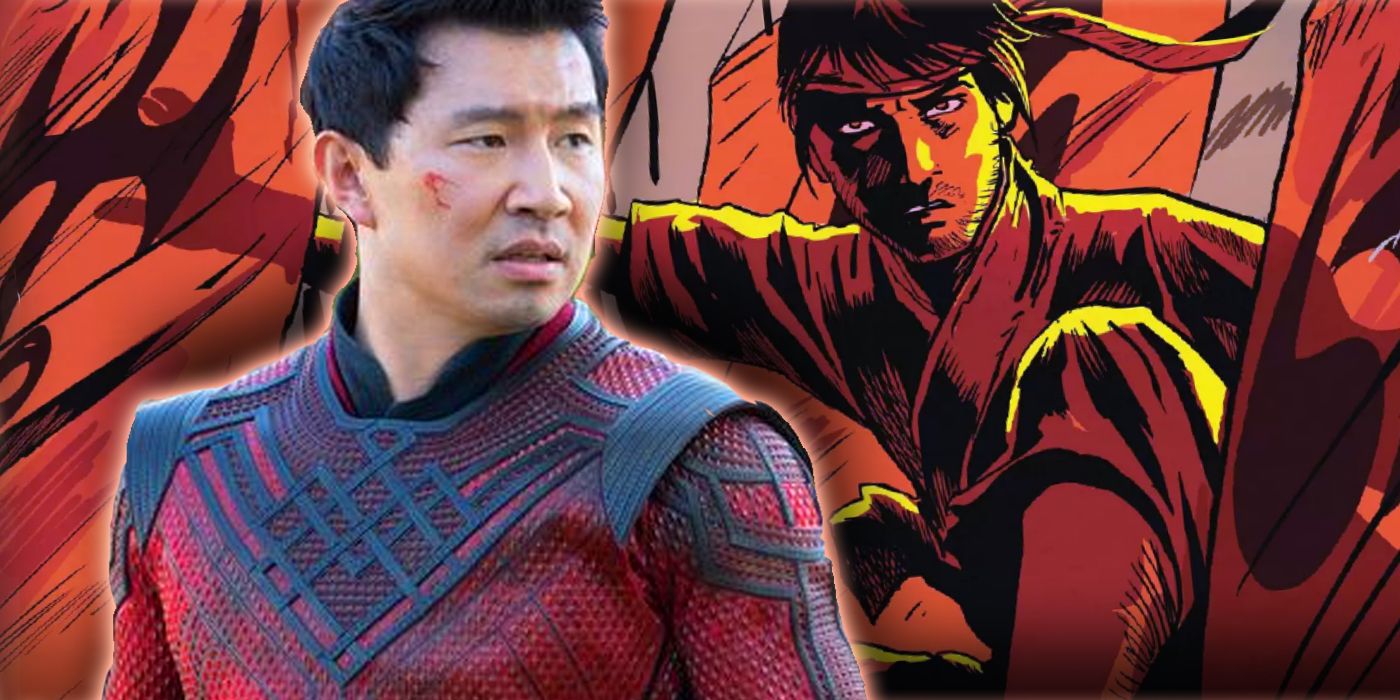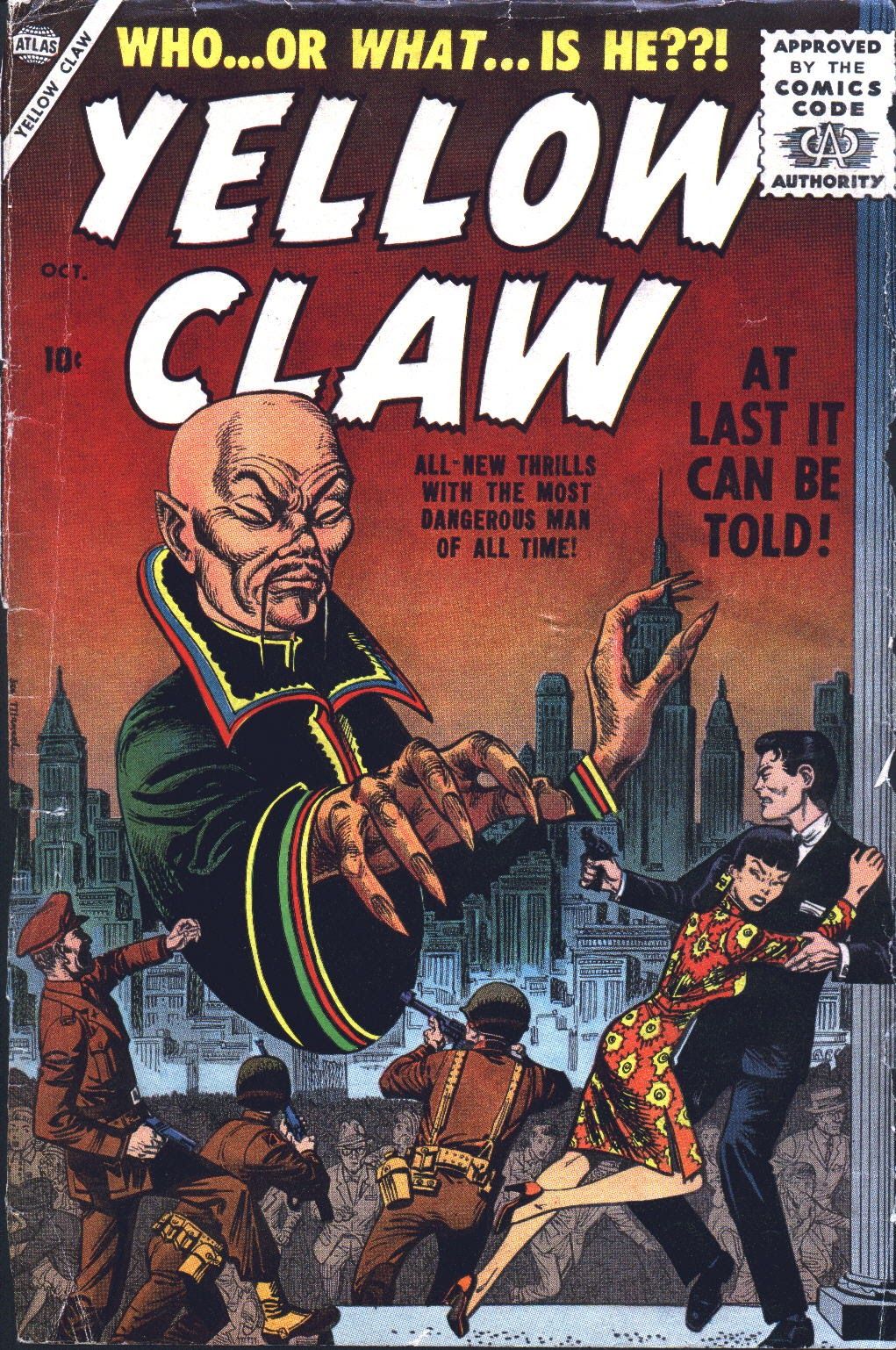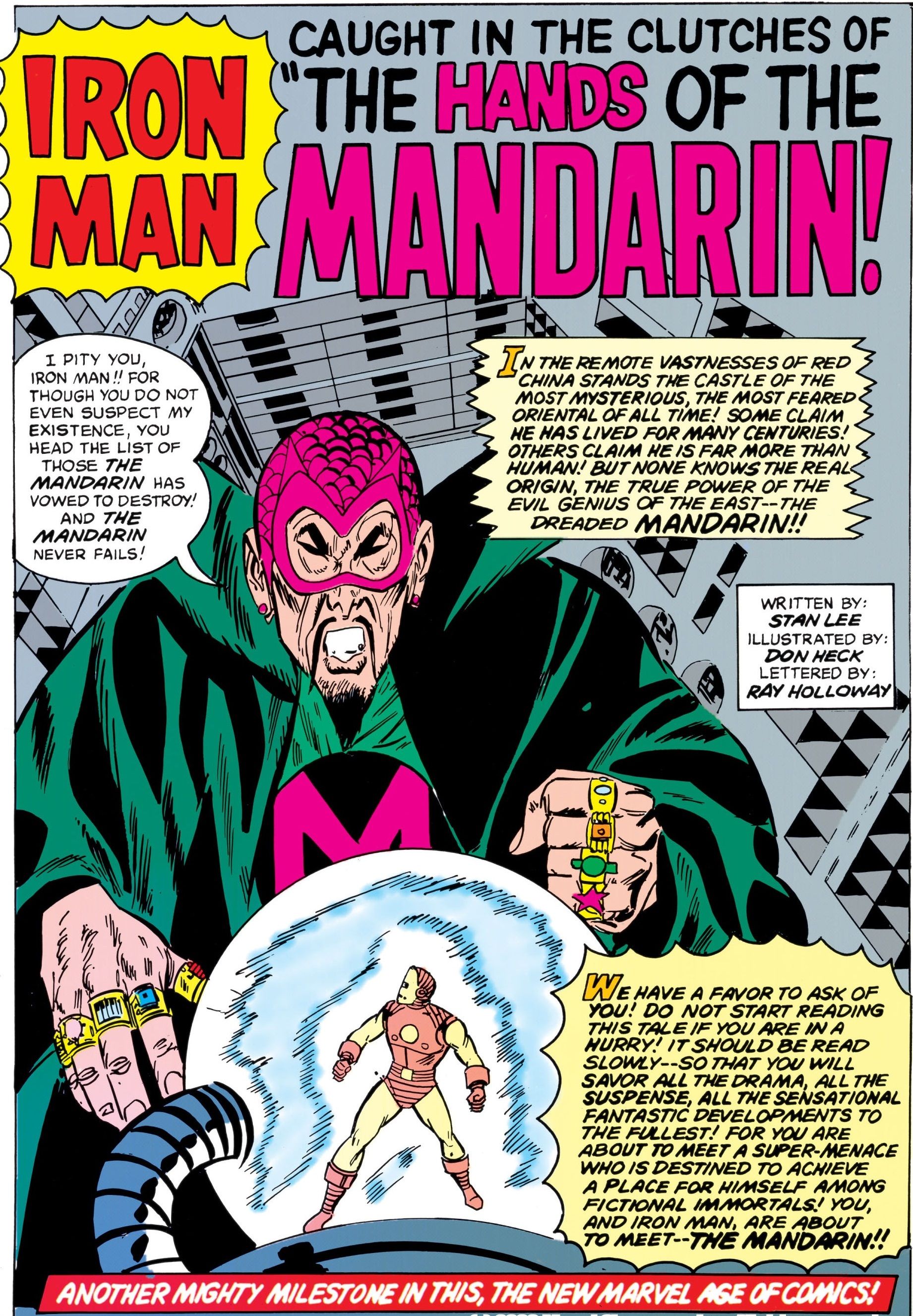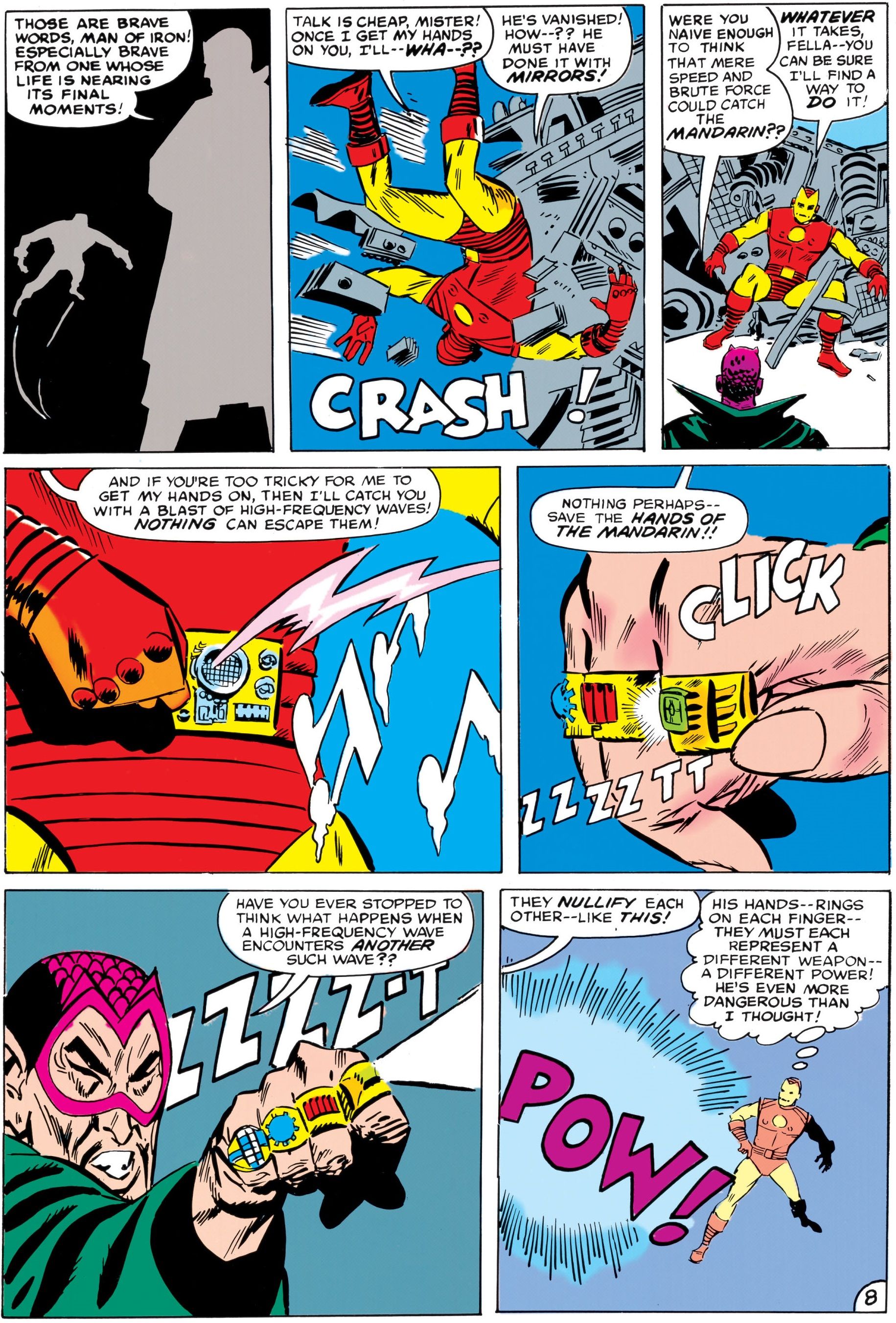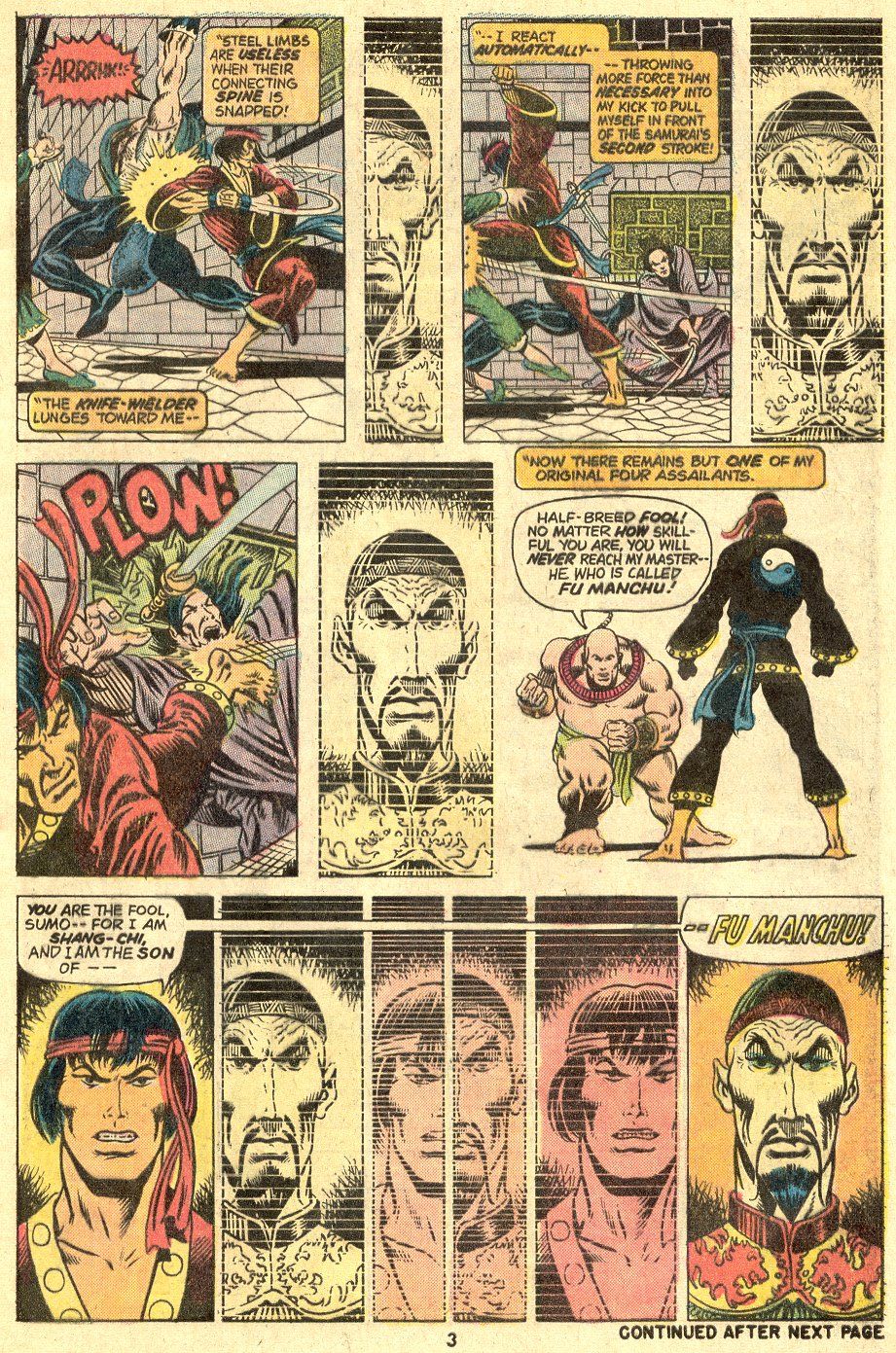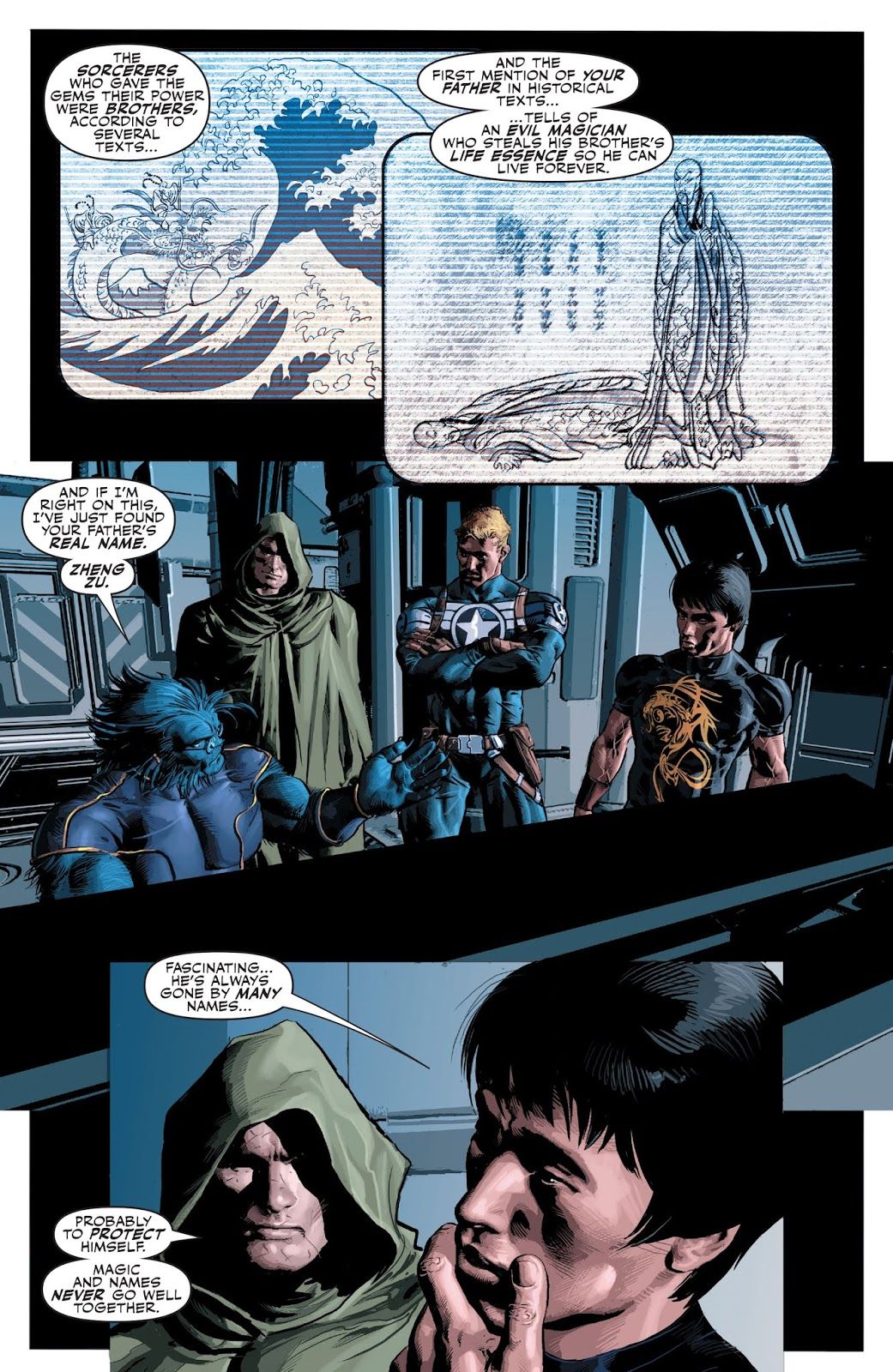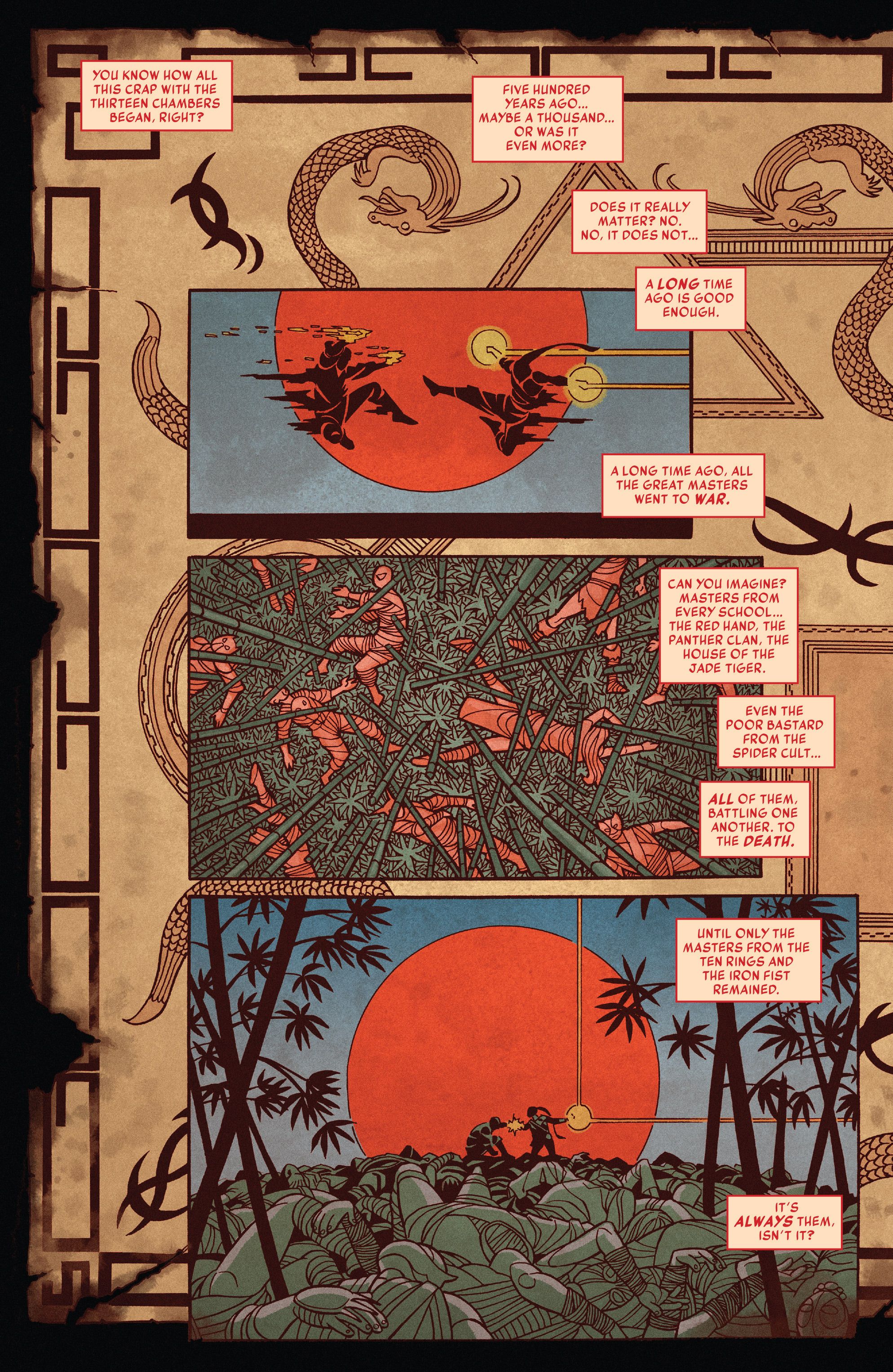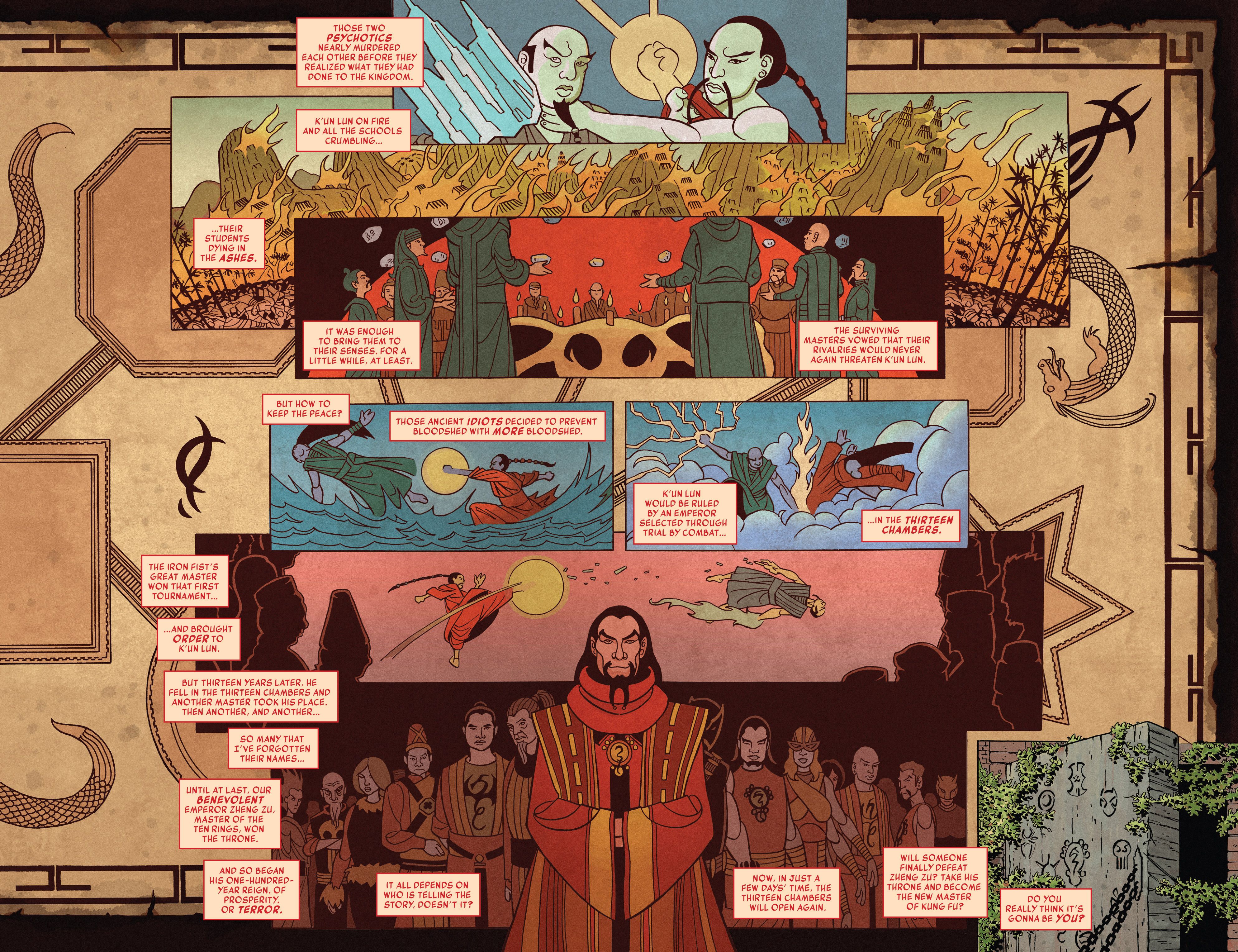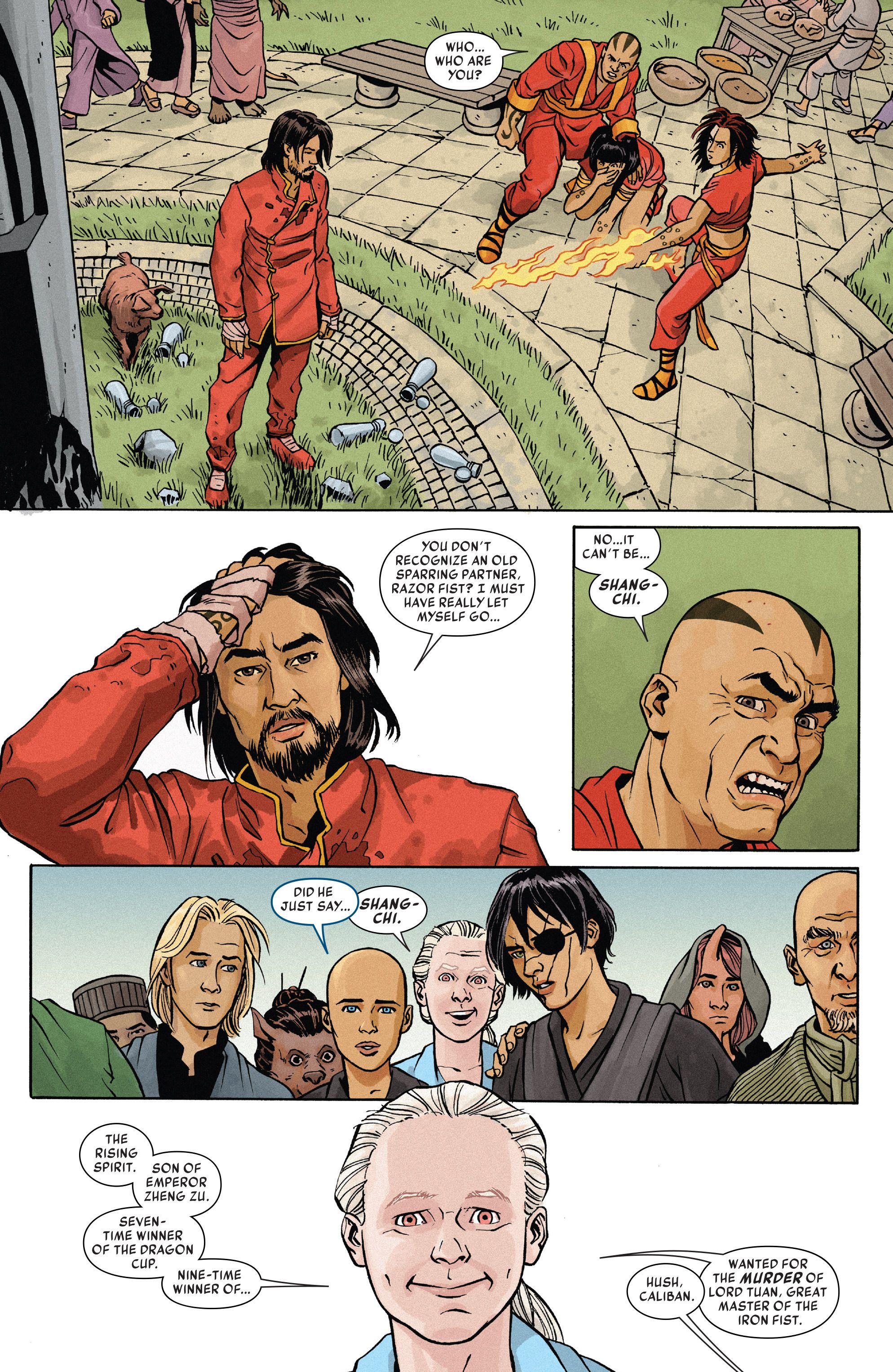Today, we look at the Marvel comic book that first came up with a connection between Shang-Chi and the ten rings of the Mandarin.
This is a still-new feature called "Written in the Book." It is basically the reverse of another feature of mine called "Follow the Path," where I spotlight changes made to comic book characters that are based on outside media, as well as characters who entirely came from outside media. Nowadays, there are so many comic book films and TV series out there that we can spotlight examples of TV and film adapting specific and less famous comic book stories to other media (so no "Spider-Man lifts up debris" or stuff like that).
This one is a bit tricky since it is more of a CONCEPT that is being pulled out rather than a specific plot point, but the concept is so novel that I still think that it is worth giving credit to it for coming up with a clever way to connect Shang-Chi with the Mandarian that is obviously a key aspect of the upcoming Marvel Cinematic Universe film, Shang-Chi and the Legend of the Ten Rings.
In case you're unfamiliar with the character (outside of the distinctive facial hairstyle that the film version of the character inspired), Fu Manchu is an Asian villain who appeared as the villain in a series of adventure novels by British novelist Sax Rohmer that began in 1913. Fu Manchu was the epitome of the idea of "Yellow Peril," which is when writers turn Asian villains into some sort of exotic boogey man. Here is how Rohmer described Fu Manchu in one of the books, "Imagine a person, tall, lean and feline, high-shouldered, with a brow like Shakespeare and a face like Satan, ... one giant intellect, with all the resources of science past and present ... Imagine that awful being, and you have a mental picture of Dr. Fu-Manchu, the Yellow Peril incarnate in one man." Fu Manchu is essentially one of the world's earliest supervillains.
Something that you really have to keep in mind is that the people who were mostly responsible for the creation of the Marvel Universe were of a whoooooooole other generation than us. Like multiple generations off from us. Stan Lee, if he were still alive, would be turning ONE HUNDRED YEARS OLD in 2022. So obviously, Lee came of age at a time when Rohmer's Fu Manchu character was actually still quite a big deal.
Therefore, the influence upon Lee was clear, which resulted in both the short-lived 1950s adventure series, The Yellow Claw (with the Yellow Claw being basically Fu Manchu) by Al Feldstein and Joe Maneely...
and then Lee himself and artist Don Heck introduced the Mandarin in 1963's Tales of Suspense #50, who was ALSO basically Fu Manchu!
Only Mandarin also had ten power rings that he wore on his fingers that gave him a different superpower for each ring...
In 1973, Steve Englehart and Jim Starlin had pitched a new character to tie in with the martial arts craze that was spreading through popular culture at the time. The hero of the book would be Shang-Chi. Marvel Editor-in-Chief, Roy Thomas, told them to work Fu Manchu into the series, as Thomas and Stan Lee had just worked out a licensing agreement with the Sax Rohmer estate for the rights to Fu Manchu, and so Shang-Chi became the SON of Fu Manchu who is trained as the world's greatest assassin by his father, but then splits from his father to become a hero instead...
Shang-Chi became a popular character, especially under writer Doug Moench, and his ongoing series, Master of Kung Fu, lasted into the 1980s before the book was canceled. Once the licensing deal was up, Marvel could no longer use Fu Manchu, so instead Marvel would constantly refer to Shang-Chi's father as simply "Shang-Chi's father."
Reginald Hudlin came up with the idea of re-naming Fu Manchu "Han," as in the villain from Enter the Dragon, but it was Ed Brubaker who really won out by coming up with the name Zheng Zu in Secret Avengers #8 (by Brubaker and Mike Deodato)...
Okay, so now Fu Manchu was Zheng Zu, but what about the ten rings?
Well, a few years after that Secret Avengers issue, Marvel had the crossover event, Secret Wars. The basic set-up for the series was that basically the Marvel Multiverse was collapsing and Marvel's Earth was destroyed. Luckily, Doctor Doom had recently received essentially the power of the Beyonder and so Doom rescued Earth by merging it with a series of alternate realities all exiting together on one merged planet known as Battleworld (that Doom would be the Emperor in charge of it all).
So during the Secret Wars crossover, Marvel's regular series (almost) all ended and they were replaced by miniseries set in the various realities of Battleworld. Almost all of these miniseries were named after old Marvel series, just done in new spins. Writer W. Haden Blackman and artists Dalibor Talajic, Goran Sudzuka and Miroslav Mrva did a miniseries called Master of Kung Fu, set in an alternate reality that sort of combined the worlds if Iron Fist and Shang-Chi into one and in this world, there are various martial arts "houses," which the two most prominent ones being the Ten Rings and the Iron Fist...
However, Blackman then came up with the clever twist of having the head of the Ten Rings be not the Mandarin, but instead Zheng Zu...
And of course, the star of the series is Zu's son, Shang-Chi...
That basic concept is now the centerpiece of the brand-new Shang-Chi and the Legend of the Ten Rings (although instead of Zheng Zu, they came up with their own new name, Wenwu). Cool stuff.
If anyone has a suggestion for a future edition of Written in the Book, be sure to drop me a line at brianc@cbr.com. Remember, I'm not looking for the really obvious stuff, but more stuff that many people wouldn't even necessarily automatically know was adapted from a comic book.

